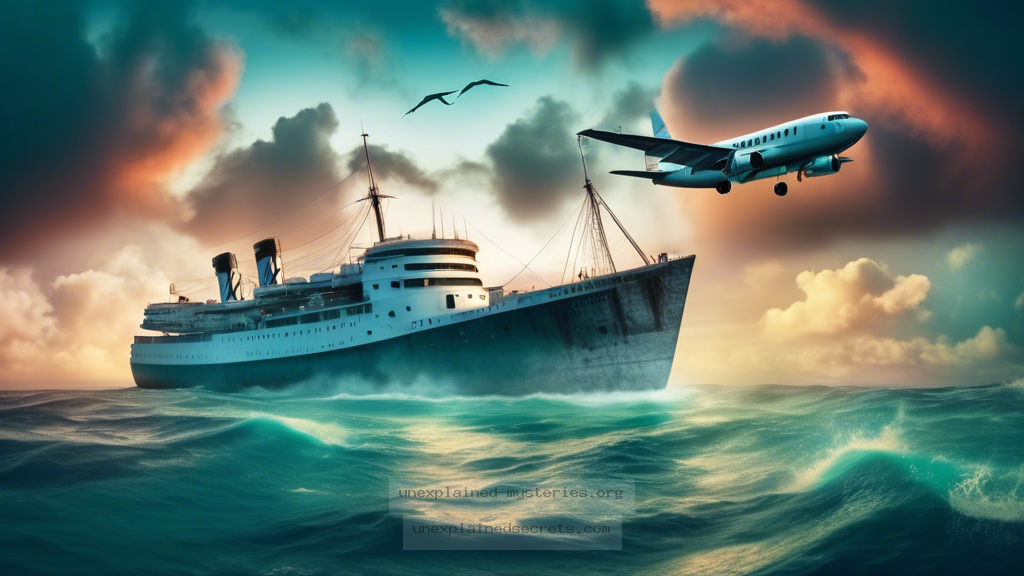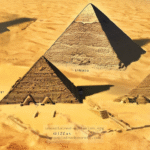What Really Happens to Ships and Planes that Disappear in the Bermuda Triangle?
What Really Happens to Ships and Planes that Disappear in the Bermuda Triangle?
The Bermuda Triangle, a region bounded by Miami, Bermuda, and Puerto Rico, has long been the epicenter of intrigue and speculation due to the mysterious disappearances of ships and planes. This enigmatic area has become synonymous with tales of lost vessels and vanished aircraft, leading many to question what truly occurs within its confines. Understanding these disappearances is not only a matter of historical curiosity but also one of safety for modern navigation. This post will delve into the compelling mysteries surrounding the Bermuda Triangle, examining historical accounts, scientific theories, and ongoing investigations.
The Historical Context of the Bermuda Triangle
The term “Bermuda Triangle” was popularized in the 20th century, but stories of strange occurrences in the region date back centuries. One of the earliest recorded incidents was the disappearance of the USS Cyclops in March 1918, a navy cargo ship that vanished without a trace while sailing from Barbados to Baltimore. With over 300 men and cargo onboard, its disappearance sparked significant public interest. Theories began to proliferate, suggesting everything from magnetic anomalies to underwater methane explosions as possible explanations.
Another notable case is that of Flight 19, a group of five TBM Avenger torpedo bombers that went missing during a training flight in December 1945. Despite a massive search operation, neither the planes nor their crew were ever found. The mystery deepened when a rescue plane sent to find them also vanished. These incidents contributed to the Bermuda Triangle’s reputation as a perilous area, prompting numerous investigations and theories that have continued to evolve over the decades.
Core Theories Behind the Disappearances
Several theories have emerged over the years to explain the mysterious disappearances in the Bermuda Triangle. Here are some of the most common:
- Magnetic Anomalies: Some researchers suggest that magnetic variations in the area can affect navigational instruments. This theory posits that when ships and planes encounter these anomalies, they can become disoriented.
- Methane Hydrate Eruptions: Another compelling theory involves the presence of methane hydrates on the ocean floor. These gas pockets can erupt, creating bubbles that reduce water density, causing ships to sink almost instantly.
- Piloting Errors: Many incidents can be attributed to human error. In the case of Flight 19, the pilots were reportedly inexperienced and may have misjudged their position, leading them into perilous conditions.
- Weather Phenomena: Sudden storms and waterspouts are common in the Bermuda Triangle. This unpredictable weather can catch vessels off guard, leading to accidents and disappearances.
Documented Cases of Disappearances
Throughout history, numerous documented cases have fueled the Bermuda Triangle’s reputation. Here are a few of the most notable examples:
| Incident | Date | Details |
|---|---|---|
| USS Cyclops | March 1918 | Disappeared with 309 men and cargo; never found. |
| Flight 19 | December 1945 | Five TBM Avengers went missing along with a rescue plane. |
| SS Marine Sulphur Queen | February 1963 | Disappeared with 39 crew members; last heard from near the Triangle. |
| Star Tiger | January 1948 | Commercial flight vanished during a flight from the Azores to Bermuda. |
Each of these incidents adds to the growing body of evidence suggesting that the Bermuda Triangle is not merely a myth but a region with a unique set of dangers.
Practical Implications and Evidence
The practical implications of understanding the Bermuda Triangle are significant for modern navigation and safety. The region is a busy corridor for commercial and private vessels, including cruise ships and cargo freighters. Therefore, identifying potential dangers is crucial for ensuring safe travel. For example, weather forecasting and navigational technologies have improved significantly, helping mitigate some risks associated with sudden storms or navigational errors.
Moreover, advancements in marine research, including sonar mapping and underwater exploration, have helped scientists better understand the oceanic features that may contribute to accidents. Researchers have discovered underwater canyons and volcanic activity in the Bermuda Triangle, which could play roles in creating hazardous conditions.
Alternative Perspectives on the Mystery
Despite the abundance of theories, some skeptics argue that the Bermuda Triangle’s reputation is exaggerated. They point out that the number of incidents in the Triangle is not significantly higher than in other heavily traveled regions of the world. According to the U.S. Board on Geographic Names, the Bermuda Triangle is not officially recognized as a geographic location, further complicating the narrative.
Additionally, many of the stories surrounding the Triangle have been sensationalized by popular culture, including films, books, and documentaries. These portrayals often overlook the fact that many disappearances can be attributed to natural causes or human error rather than supernatural phenomena. This skepticism encourages a more rational examination of the data available.
Misconceptions and Clarifications
Several misconceptions exist regarding the Bermuda Triangle. One common belief is that the area has a higher-than-normal rate of disappearances. However, studies show that the Triangle’s incident rate is consistent with other heavily traveled maritime areas. Furthermore, many reported cases involve vessels that were not properly equipped for the conditions they faced.
Another misconception is that the Bermuda Triangle is a place where the laws of physics do not apply, leading to supernatural explanations like alien abductions or time warps. While these ideas make for entertaining narratives, they lack solid scientific backing. Instead, the focus should remain on tangible factors and human behavior that contribute to accidents and disappearances.
Best Practices for Investigation and Study
For those interested in investigating the mysteries of the Bermuda Triangle, several best practices can enhance the study’s credibility and efficacy:
- Utilize Historical Data: Compile and analyze historical records of disappearances to identify patterns and commonalities.
- Engage with Experts: Collaborate with meteorologists, oceanographers, and navigational experts to gain insights into the environmental factors affecting the area.
- Conduct Field Studies: Use modern technology such as drones and underwater mapping to study the ocean floor and assess potential hazards.
- Public Awareness: Educate travelers about the realities of navigating in the Bermuda Triangle, including best practices for safety and preparedness.
Future Developments and Ongoing Research
As technology advances, so does our ability to explore and understand the Bermuda Triangle. Current research focuses on improving navigation systems, enhancing weather prediction models, and utilizing underwater exploration technologies to uncover the secrets of the ocean floor. Projects like the Ocean Exploration Trust are dedicated to mapping and understanding the ocean’s depths, which may lead to new discoveries about the maritime risks present in the Bermuda Triangle.
Additionally, ongoing studies in marine geology and oceanography will continue to shed light on phenomena like methane hydrates and their potential role in vessel sinkings. As researchers collaborate across disciplines, we may finally piece together the puzzle of why so many ships and planes have vanished in this enigmatic region.
Conclusion: The Ongoing Mystery of the Bermuda Triangle
The question of what happens to ships and planes that disappear in the Bermuda Triangle remains complex and multifaceted. While historical accounts and documented cases provide a narrative filled with intrigue, scientific inquiry offers explanations rooted in observable phenomena. As we explore the intersection of myth, science, and human behavior, it becomes clear that the Bermuda Triangle is not merely a site of mystery but a testament to the challenges of navigating one of the world’s most unpredictable environments.
By fostering a better understanding of this region, we can enhance safety measures for those who traverse its waters and continue to unravel the secrets hidden beneath the waves. The Bermuda Triangle may always hold an element of mystery, but through investigation and research, we can demystify its reputation and approach its challenges with informed caution.
Other Articles
Recent Posts
- What Happened to Flight MH370? The Conspiracy Theories That Still Haunt Us
- What Secrets Lurk Within the Walls of the Infamous Trans-Allegheny Lunatic Asylum?
- What Evidence Supports the Existence of Bigfoot in the Pacific Northwest?
- What Happened to the Indus Valley Civilization? Unraveling the Mysteries of Ancient Urban Life
- Can Telepathy Be Scientifically Proven Through Laboratory Evidence?







